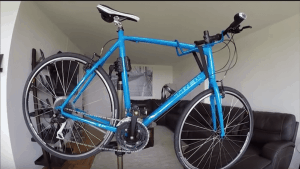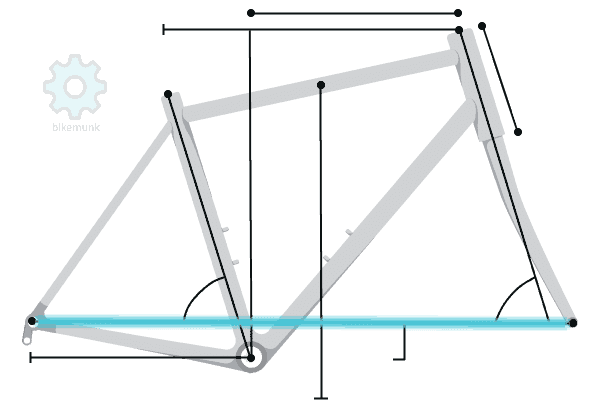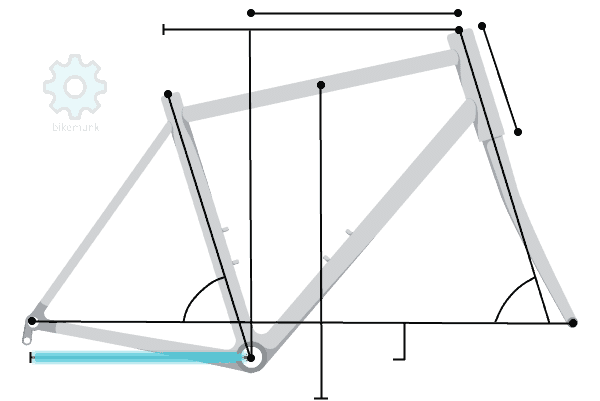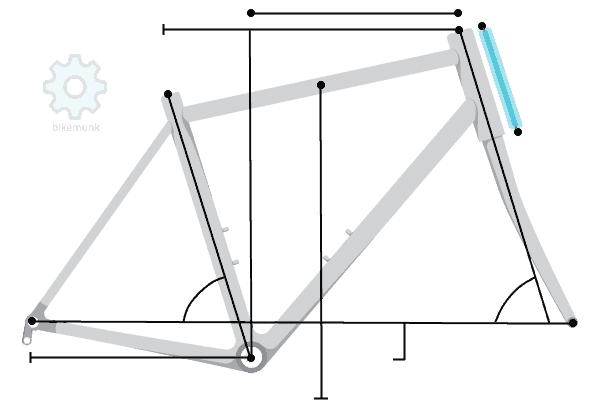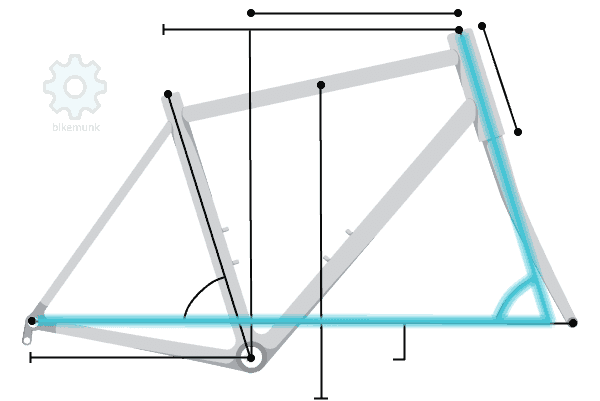The Trek 7.2 FX is an example of the creativity that manufacturers use to tweak the design of a bike to fit a particular user. We’ll cover what makes this one unique and how it compares to different offerings by Trek as well as other comparable rides of other manufacturers.
What is the Trek 7.2 FX Designed to Do?
The Trek 7.2 FX is a hybrid bike that toes the line between a city model and a mountain bike. It packs some light trail use to increase its versatility as a versatile machine. Trek advertises it as a sporty ride with a decent set of components, including its 24-speed drivetrain. It is, nevertheless, an entry-level bicycle with some downgrades to keep the cost in line for budget-minded cycling without sacrificing a decent ride for the price.
Who is the Trek 7.2 FX Good For?
The bike is an excellent choice if you want to test the waters with a hybrid model that won’t break the bank. It offers a good option for anyone looking for a daily commuter who primarily takes to the streets rather than off-road. It would also make a great ride for cyclocross for commuting or touring if that’s more your speed.
Keep in mind that it’s an outdoor bike, not an indoor model. If you’re looking for something to help you exercise from home, we recommend you start with the Assault Bike.
Frame & Material
The Trek FX has a Trek Alpha Gold aluminum frame with a high-tensile steel fork.
This technology is Trek’s solution for creating more compliant frames while still maintaining the necessary stiffness and flexibility for a more comfortable ride. The manufacturer stands behind their products with a lifetime warranty against defects in workmanship or design once you register your steed with the manufacturer.
Pros
- The Trek 7.2 FX does a fine job of balancing the lighter weight of its aluminum frame with the durability of a hybrid bike.
- The bike provides a smooth and responsive ride that handles well for a bike in this class.
- The gear is good for this price point, albeit at the cost of other aspects of the entire package.
Cons
- Unfortunately, Trek skimped a bit on some parts, most notably the pedals and saddle.
- While it handles pavement for city bike comfort, off-road riding leaves a lot to be desired because the steel fork reverberates all the momentum.
- The tires are heavier and wider than the average road bike, making for a slower ride.
Anyone looking for a new bike should consider the handling and frame quality, which make this bike feel great, especially if you like a lively ride. However, the components could be better, which is something you might think about upgrading if you want to invest in this bike.
Expert Opinions
“Anybody from 15 to 99 as long as you know how to ride a bike, this may be the ideal bike for you if you have to commute to work, run errands, and maybe even ride trails.” – The Adventurous Cyclist
“This is a great bike if you’re starting a fitness program, maybe commuting back and forth to work.”- Boyd, Bumsteads Bicycles
How Does Trek 7.2 FX Compare to Other Bikes from Trek?
If the Trek 7.2 FX doesn’t fit your needs, there are plenty of other options that may interest you. Many manufacturers have different takes on what to emphasize and downplay with bike styles. That’s why it’s essential to pay close attention to what resonates and what turns you off precisely about a particular ride. The chances are you’ll find the perfect fit if you do, so it pays to consider the numbers and the impact on your riding experience.
Wheelbase Length
Wheelbase length = the length between your front and rear axles.
Trek defines “hybrid” in several ways, which is evident when you start looking at the bike’s geometry. With wheelbase length, you’ll see rides closer to a touring bike, lengths greater than 1050mm. The XM700+ takes it to the extreme with its larger figure, whereas the FX 7.2 stays close to average wheel size at 1057mm.
Chainstay Length
Chainstay length = the length of the tube running from the rear wheel to the bottom bracket.
We see some interesting takes on the chainstay length. The longer numbers for the XM-700+ and Verve 1 speak offer greater stability and heel clearance. The shorter lengths of the FX S 5 and CrossRip 3 give you a better option for getting fancy with pops and wheelies (if that’s your thing), while the FX 7.2 rides the middle ground at 445mm.
Head Tube Length
Head tube length = the angle that the head tube is positioned relative to the ground.
The head tube length gives you an indication of how upright you’ll sit in the saddle. A greater length like the XM700+ puts the premium on a comfortable ride. The Verve 1 goes for a more bent-over stance, making the rider more aerodynamic for better speed, while the FX 7.2 likes the Goldilocks position at 11.5cm.
Price
The price points for hybrid bikes hover in several clusters, which we see with the DS1, Verve 1, and the FX 7.2 at $460 MSRP. It’s worth noting that these bikes all have the Alpha Gold Aluminum frame, as does the CrossRip 3, albeit with a higher grade of technology with the 200 Series. Interestingly, Trek still embraces aluminum even in the XM700+ with its Alpha Gold Aluminum, which provides clues about where they put their money.
Component Differences
Shimano is usually the best choice in this lineup. The Shimano is a single crankset, whereas the FX 7.2, DS 1, and Verve 1 have triple cranksets versus the double of the FX S and CrossRip 3.
How Does the Trek 7.2 FX Compare to Similar Bikes on the Market?
Wheelbase Length
Wheelbase length = the length between your front and rear axles.
Giant markets the Contend 3 as an endurance bike, but it also has a shorter wheelbase length typical of a road model. The other rides, including the FX 7.2 at 1057mm, approach the level of a touring bike for greater comfort on long hauls. That’s where you need to consider how important speed is to you—especially if you are running late often on your commute to work.
Chainstay Length
Chainstay length = the length of the tube running from the rear wheel to the bottom bracket.
Again, the Giant entry stands out from the rest as a bike that will provide a livelier ride to make your commute interesting, at least. The other bikes, including the FX 7.2 at 445mm, lean toward a more stable ride with their longer lengths. The Cannondale Adventure 3 puts comfort in its focus with a greater heel clearance for longer trips when you’re packing a lunch in your panniers.
Head Tube Length
Head tube length = the length of the tube which mounts the front fork steerer.
The FX 7.2 and Diamondback Trace make up for some of the loss of aerodynamics with a shorter head tube length that will have you more bent over for less wind resistance. Likewise, Giant capitalizes on the comfort factor with a longer head tube so that you’ll have a more upright posture on the bike. These figures are typical of the give-and-take you see with hybrid models.
Head Tube Angle
Head tube angle = the angle that the head tube is positioned relative to the ground.
The head tube angle also comes into play when it comes to steering and maneuverability. The Trace and Contend 3 get closer to a cyclocross bike which means more effort to steer it. The Cannondale entries and the Sirrus Sport take the opposite approach and opt for faster steering, with the FX 7.2 taking a similar take at 70.5 degrees.
Component Differences
There are some serious divides when it comes to the groupset of each of these bikes. The Cannondales entries opt for V-brakes, which saves on the weight factor, while the Giant has Tektro TK-R312 brakes and the FX 7.2, the Tektro linear-pull. The others go the disc brake route for better stopping power which makes them worthy of consideration for this ride.

